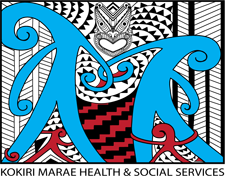Horohopu - Taonga Tākaro (Traditional Māori Game)
- Details
- Created: Friday, 06 August 2010 11:12
- Written by Rangatahi Tu Rangatira
Horohopu - Taonga Tākaro (Traditional Māori Game)
Game Whakapapa/Atuatanga
Horohopu is one of many tākaro that can be played using a Poi Toa.
The Poi has its own whakapapa, which can be traced to Tānemahuta, the ancestral god of the forests and all things living in it. Tānemahuta mated with Hineiterepo (the swamp maiden) and they produced raupō (bulrush). Tānemahuta also mated with Pakoti (Pakoki) and created a superior species of harakeke (flax). Raupō and harakeke are the main traditional sources for making Poi which are used in the game Poi Toa.
Game description
Throw and catch the Poi Toa from one team member to another to advance towards the scoring zone.
Catch the Poi Toa in the scoring zone to score points.
1st team to a set amount of points or most points after set time wins.
Number of players required
6 players/people minimum (3 a side)
Space required
Normally played on netball sized court or grass area marked with cones.
Game benefits
Improve catching, passing, spinning, coordination, running, jumping skills while using a Poi Toa.
Equipment required
Poi Toa, Kī, or Frisbee
Cones for field marking
Bibs or Rippah tags for team I.D
Guidelines
Play starts from Te Marama with the Kaiwawao (referee) throw in to Te Ara (middle area of the playing field).
Players attempt to catch and pass the Poi Toa to a team member in Te Ao (attacking zones).
Attacking: players catch the poi in the Pawero (scoring zone) to score a point.
Person in possession of the Poi Toa MUST KEEP IT SPINNING at all times.
Team get the Poi Toa after every score.
Handover occurs when the Poi Toa is out over boundary lines, hands possession to the defending team.
If the Poi Toa touches the ground, stops spinning, a player walks while in possession of the Poi Toa, or takes too long to pass it. A penalty can occur (Kaiwawao (referee) discretion).
If the Poi Toa goes out over the back boundary line. Handover to the defensive team.
Poi Toa must be caught by the Aho (the tail of the Poi) at all times. If 2 players catch the Poi Toa at the same time, the hand closest to the Kī (ball/head) gets possession.
Variations
Ripper: If you get ripped with the Poi Toa it is a hand over.
Touch or ripper: If you are touched or ripped with the Poi Toa you have 3-5 seconds to pass, you can not score if you have been touched/ripped.
Passing: Must pass the Poi Toa at least 3 times between your team before scoring.
You can have different scoring zones, experiment with setting up free standing "Hula hoops". Players attempt to throw the Poi Toa through the hoop to score points BE CREATIVE.
If the Poi Toa goes to ground there are 2 variations that can be played: 1) an automatic hand over if Poi Toa hits the ground 2) If Poi Toa hits the ground play continues, but Poi Toa must be kicked into the air and caught on the full by a team member. In both cases Poi Toa must be spun immediately once back in possession.
Beginners: start the players in allocated zones (Pawero, Te Ara, Te Ao). Rotate players so that they get a turn in each position and area of play.
Advanced: As the skill and understanding increase players can move freely between zones as long as the Poi is thrown to a team member in each zone.
Scoring: Add an additional Poi Toa to keep people thinking and moving, and to open up scoring opportunities. This will also speed up play, changing the experience and dynamic of the Tākaro.





